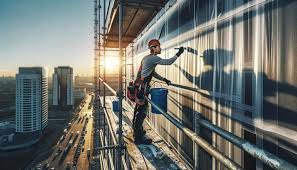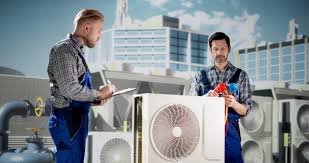Energy Efficiency Starts at the Edge: Windows and Insulation by Grand Exteriors

Energy efficiency is often discussed regarding appliances and HVAC systems, but the real starting point is at the edges of your home—its windows and insulation. These components form the protective shell that determines how well a home maintains internal temperature and wards off external conditions. With rising energy costs and environmental concerns, more homeowners are looking at the performance of their building envelope to conserve resources and reduce utility bills.
Grand Exteriors of Blaine recognizes that addressing inefficiencies at the structural level can have a lasting impact. We will explore how attention to windows and insulation can transform energy usage, overall comfort, and property value. This focus begins at the boundaries, where temperature, moisture, and air all interact with the surfaces of your home. Investing in these areas is a long-term step toward smarter living.
Windows: The Gateway to Efficiency
Windows often go unnoticed until a problem, like a draft, condensation, or rising heating bills, occurs. However, windows are the primary culprits of energy loss in any home. Outdated or poorly installed windows can allow conditioned air to escape while letting outside air seep in, causing HVAC systems to work overtime. By contrast, modern, energy-efficient windows are designed to regulate internal climates, deflect UV rays, and reduce glare while preserving views and aesthetics. Factors like frame material, glass type, and installation technique contribute to performance. Double- and triple-pane windows filled with inert gases and coated with low-emissivity films significantly outperform older single-pane models.
Beyond the glass, proper sealing and framing techniques prevent leaks that can undermine even the most efficient window. Grand Exteriors integrates these components precisely, ensuring that each installation contributes to a home’s energy strategy. When windows are selected and installed with attention to climate and orientation, the results include reduced energy consumption, improved interior comfort, and enhanced resale potential.
Insulation: A Hidden Barrier with Major Impact
While windows provide a visible opportunity for improvement, insulation works behind the scenes to make a measurable difference in how a home performs. Inadequate insulation allows for massive heat transfer, leading to fluctuating indoor temperatures, increased humidity, and higher utility bills. Insulation functions as a thermal barrier, slowing the movement of heat between indoor and outdoor spaces. It is particularly crucial in attics, crawl spaces, and walls, where temperature extremes are most likely to penetrate. A properly insulated home doesn’t just keep heat in during the winter—it also helps keep it out during the summer.
The key lies in using the right materials with the right R-values for the specific part of the home. Depending on the application, spray foam, blown-in cellulose, and fiberglass batts all serve different roles. Grand Exteriors approaches each project focusing on long-term effectiveness and local climate compatibility. By upgrading insulation, homeowners gain consistent comfort, less strain on mechanical systems, and substantial energy savings over time.
Sealing the Gaps: Airflow Control Matters
Even with top-performing windows and thick insulation layers, gaps and cracks in a home’s structure can undermine everything. Uncontrolled airflow contributes to energy loss, moisture problems, and poor indoor air quality. These gaps often exist in the most overlooked places—around doors, ducts, recessed lighting, and wiring holes. Air sealing identifies and closes these leaks, frequently using caulking, weatherstripping, or foam sealants. This process is critical because even small leaks can lead to substantial energy waste over a year.
A comprehensive energy efficiency plan must include a detailed assessment of air infiltration points. Grand Exteriors understands that energy performance isn’t achieved by upgrading one component alone; it results from a coordinated approach that includes sealing, insulation, and high-performance windows. When air sealing is done right, it conserves energy and prevents moisture intrusion that can lead to mold, rot, and structural issues. This foundational step supports a more durable and sustainable home envelope.
Choosing the Right Partner for the Job
Upgrading the edges of your home is a significant undertaking that requires thoughtful planning and execution. The effectiveness of windows and insulation depends not only on the materials chosen but also on the precision of their installation. Even the highest-rated products can fail to deliver if not properly fitted or sealed. That’s why working with a contractor who understands how different components interact within the whole structure is crucial. Grand Exteriors approaches each project with a clear understanding of building science principles, ensuring that every detail supports the homeowner’s energy efficiency goals.
Every decision is made with performance and longevity in mind, from selecting the correct window types for sun exposure to ensuring insulation materials meet local climate demands. Their approach doesn’t just stop at installing products; it extends into helping homeowners understand how their home operates and how to maintain efficiency for years to come. It’s this integrated, thoughtful process that creates lasting value.
Energy efficiency doesn’t start in the utility room—it begins at the very edge of the home’s structure, where windows, insulation, and sealing create a protective barrier. Addressing these elements is not only a proactive way to reduce energy costs but also an investment in long-term comfort, sustainability, and property resilience. The benefits ripple outward, affecting everything from air quality and temperature stability to system longevity and resale value. Grand Exteriors recognizes that improving a home’s envelope isn’t just about products—it’s about performance and results. Homeowners take the first and most important step toward smarter living by focusing on the edge.




